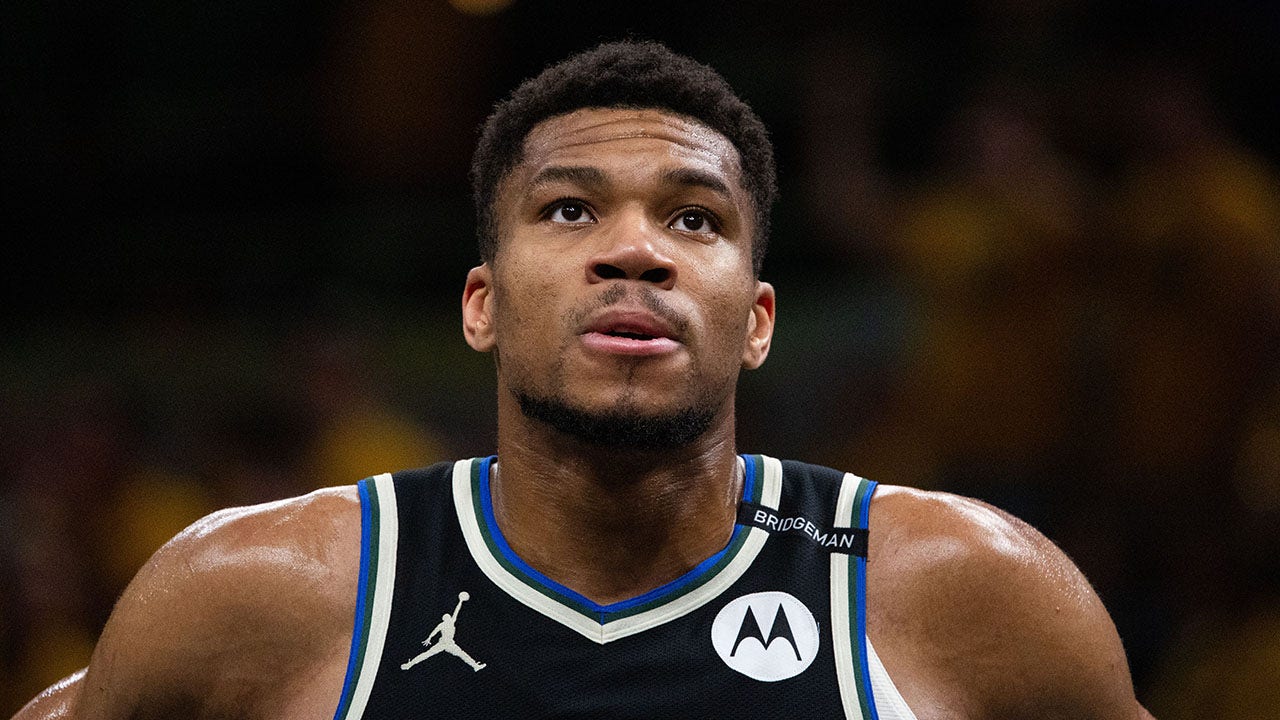A good comforter, aka a duvet or duvet insert, will wrap you up in pillowy goodness (read: bedtime bliss). It should be cozy but breathable, soft yet durable. The best comforters for 2025 are all these things — plus they're fairly low-maintenance, a big plus if you don't want to have to run to the dry cleaner with bulky bedding (and isn't that us all?).
How do I know which duvets deserve your dollars? As one of Yahoo’s resident home writers, I took a bunch of top-rated comforters for a slumber (er, spin). First, I sifted through dozens of options online, looking for impressive customer reviews and ratings. I narrowed down the pool to 14, then I used each comforter on my own bed and put it through several tests that included spills, wash and dry cycles and a whole lot of shaking (read more about that in the "how we tested" section below).
I did this all in the name of sorting out which duvets were worthy of my (and your) nightly regimen. Sleep on the job? Someone had to do it — and that someone was me.
A note before we dive in: As I touched on above, I'll use the words "comforter," "duvet" and "duvet insert" interchangeably throughout this piece. You can use this type of bedding by itself or with a washable duvet cover. While I tested some different sizes, the prices throughout are for queen sizes for easier comparison. And if you’re considering a bigger bedroom update, can I interest you in a new bed frame?
Table of contents
Best comforters for 2025
Fill type: Down alternative (rPET) | Sizes: Twin/Twin XL, Full/Queen, King/Cali King | Weight: 6.8 lbs. for Queen | Construction: Sewn through
Topping my list is the Brooklinen All-Season Down Alternative comforter. It's lofty, even though it weighs in at less than 7 pounds, lighter than many others I tested. And it's comfy, thanks to a hypoallergenic fill wrapped in a cooling-yet-cozy cotton sateen shell.
I’ve owned this comforter for more than two years — swapping out duvet covers regularly and spot-/dry-cleaning the insert as needed — and it’s still in the same plush, cozy shape as when I got it.
It's so versatile that I use it almost all year, subbing in a lighter quilt only in late summer months. You could probably keep the comforter on if you like to blast the air conditioning, but Brooklinen also sells Lightweight and Ultra-Warm variations depending on your internal body temperature and the season.
This duvet insert is sustainably made with hypoallergenic recycled plastic, plus it's Oeko-Tex certified, meaning it’s been vetted against harmful chemicals for your safety.
I was impressed by how well it survived the aggressive shaking from my testing, which I chalk up to its sewn-through, box-style construction. The fabric is also breathable and quick-drying.
Though this down-alternative comforter is pricey, Brooklinen frequently offers discounts with email sign-up and other promotions. And this is the closest alternative to down fill I’ve seen. It feels like a giant hug for the bed, making it a worthy investment!
Pros
- Cushy and lofty
- Hypoallergenic
- Sustainably made
- Oeko-Tex certified
Cons
- Pricey
- Spot/dry-clean only
Fill type: RDS-certified down | Sizes: Twin, Double/Queen, King/Cali King | Weight: 6.4 lbs. for King | Construction: Sewn through
When it comes to down (feather) duvets, Garnet Hill’s are some of the most comfortable, beautiful and thoughtfully designed I've found.
The 230-thread-count percale shell feels smooth and crisp to the touch. With a 550 fill power, the comforter is not quite as cushy as the Brooklinen comforter above, but it's similarly lofty.
Like Brooklinen's down and alternative-down comforters, this style has a box-stitch weave throughout. During my shake tests, it was successful at keeping the feathers from moving around or falling out.
In my spill test, this comforter appeared to be almost water-resistant, at least for a few seconds, which may indicate that it's slower to wick sweat than some others I tested. But that could make it easier to catch actual spills before they settle in and travel.
One fun feature of this down comforter is that it comes in 13 striking colors, so you don't necessarily need a duvet cover. I tested Tourmaline, a light teal that would work for any season. As this comforter is also machine washable, I took it for a spin in the laundry and am happy to report it preserved its shape and saturation with very little creasing.
Important callout: This comforter is Oeko-Tex certified for added safety and has a seal of approval from the Responsible Down Standard, an organization focused on more humane animal practices, plus traceability.
If you prefer a colorful down-alternative comforter, Garnet Hill offers similar shades in its Core-Loft line. (And for a bathroom upgrade, the brand's Cloud-Loft towels are among the plushest I’ve tried.)
Pros
- Lightweight and lofty
- Oeko-Tex and Responsible Down Standard certified
- Machine washable
- Comes in 13 colors
Cons
- Pricey
- May need to layer in colder months
Fill type: GRS-certified recycled PET| Sizes: Full/Queen, King/Cali King, Twin/Twin XL | Weight: 7.4 lbs. for King | Construction: Sewn through
If it’s a cool and silky comforter that you seek, Buffy’s Cloud is the one to beat.
The first thing I noticed upon opening the comforter was its luxurious, 300-thread-count sateen weave: It’s made of Lyocell, an eco-friendly fiber known for its breathability and felt cool to the touch right away, plus oh-so-silky.
The second thing I noticed was the cozy — and compared to other designs I've tested — slightly springy cushioning. Curving seams keep everything in place, as I confirmed with a good shake.
As with the other comforters I evaluated, I put this comforter through spills and (laundry) spins, and it managed to keep its composure — and sheen! —throughout everything.
This isn't just a great cooling comforter. It's also sweat-wicking, hypoallergenic and sustainable, made of Global Recycled Standard-certified PET (using 50 BPA-free plastic bottles).
I’d consider the light-to-medium weight perfect for anyone who tends to sleep warm but doesn’t want to sacrifice cloud-like coziness for fear of sweating.
Hot tip: While you can certainly slip this sweat-wicking comforter into a duvet cover, you may want to use it as-is for direct cooling. You won't be sacrificing style, as the comforter is available in a rainbow of colors!
Pros
- Cooling and silky
- Hypoallergenic
- Sustainably made
- Machine washable
- Comes in 11 colors
Cons
- Pricey
- Sateen fabric is prone to creasing
Fill type: Polyester | Sizes: Full/Queen, King/Cali King | Weight: 9 lbs. for King | Construction: Sewn through
If you don't want to mix and match bedding, this ultra-cozy find from Target’s Casaluna brand is a solid bet. It comes with a duvet and two matching shams.
The comforter is ultra-plush, with a generous polyester fill and a 400-thread-count bamboo-rayon shell that's soft, smooth and silky. It wicked away moisture quicker than nearly any other comforter I tested, and it maintained its shape, size and color after machine-washing.
I like that the comforter is Oeko-Tex certified so I don't need to worry about exposure to harmful chemicals. As someone with a 12-inch mattress, I also appreciate the comforter’s generous footprint (the King version measured 96" x 107", which is fairly large).
Casaluna's Bamboo Comforter comes in six colors — among them neutrals and earth tones — so you don't need a duvet cover. Though you can certainly use one if you want to switch things up, as long as the cover is large enough!
The thicker design of this comforter makes it particularly appealing for someone like me, who tends to run cold, and for cooler seasons. At $139 for a Queen set, it's a solid deal for such high quality.
Pros
- Plush yet breathable
- Oeko-Tex certified
- Machine washable
- Comes in 6 colors
Cons
- May be too hot in warmer months
These billowy comforters from Brooklinen, Garnet Hill, Casaluna and Buffy are the epitome of cozy. (Kristin Granero/Yahoo)
Factors to consider when choosing a comforter
Here are some things to think about when deciding which comforter (or duvet) is right for you:
Size/weight: The size of the comforter should typically match that of the bed, though you may want to size up in the case of particularly high mattresses or bed frames (or in the pursuit of extra billowiness). The weight of a comforter typically comes down to the material it’s filled with, and to what capacity (or density). Those we tested fell in the 5- to 20-pound range (more on this below in the FAQ section).
Construction:
Fill: Down comforters typically contain feathers from a goose or duck. They combine warmth and loft, but tend to shed and cost more. Down alternatives contain a fill that mimics that of (feather) down, often using recycled polyester blends. These tend to be more dense and therefore less lofty, but they're usually the most cost-efficient. They can also be better for people with allergies.
Cover: Cotton covers are typically soft and breathable, with percale variations slightly cooler-feeling (and more durable). Lyocell, Tencel and bamboo tend to be more eco-friendly and slightly silkier/smoother. Sateens feel the smoothest and silkiest of all, but are most susceptible to creasing.
Stitch: Through-stitching locks filling into place and keeps it contained so the comforter remains even. The box stitch is among the most common stitching styles, known for creating big, pillowy square pockets.
Certifications: Oeko-Tex 100 is a certification given to textiles that have been tested (and cleared) for the presence of more than 100 harmful substances. If you're buying a down comforter, look for Responsible Down Standard (RDS) or Downmark certifications, which signify a down product has met certain criteria regarding the treatment of geese and ducks in the feather removal process.
The Brooklinen Down Alternative Comforter’s “baffle-box” construction creates pillowy pockets that fill in its place. (Kristin Granero/Yahoo)
How we tested comforters
We evaluated each comforter upon arrival to account for any design snags (such as loose threads or shedding) and overall feel (softness/coziness). After weighing and measuring each one, we put it through a round of tests to evaluate design integrity and durability:
Shake test: We shook each comforter aggressively to gauge how well the fill (down or otherwise) stayed in place.
Spill test: We took a dropper of water to each comforter — the quicker the water spreads, the better the comforter's sweat-wicking abilities. We also looked for water resistance in case of spills.
Laundry test: Unless it was marked "dry clean only," we put each comforter in the washing machine and dryer (on tumble dry low), then reassessed to see if it retained its size, shape and color saturation.
Sleep test: We took each comforter for a proper slumber to assess how comfortable (and, depending on the category, how warm or cooling) it was throughout the night.
Buffy’s machine-washable Cloud comforter goes for a spin — and comes out just as cozy and silky as when it went in. (Kristin Granero/Yahoo)
Other comforters we tested
Brooklinen All-Season Down Comforter, Queen ($399): Though this offered a similar look and feel to our top down comforter pick, it isn't machine washable and doesn't come in color options. It had a 700 fill power, so I'd recommend it to someone who prioritizes a little more warmth but likes a cool outer shell.
Garnet Hill Light Down-Alternative Duvet, Queen ($269): I found Brooklinen’s All-Season Down Alternative Comforter (our best comforter overall pick and also the best down-alternative comforter we tested) to be slightly plusher than this duvet. The outer shell is covered in a faint-but-not-invisible Garnet Hill logo, so I’d definitely use a duvet cover for this, but I like how it's Oeko-Tex certified and machine washable. It's also fairly cooling.
Casaluna Premium Down Comforter, All-Season, Queen ($180): This down comforter looked and felt like our top down comforter pick, with a 600 fill power (duck down) and similar sweat-wicking abilities. It packs slightly less cushiness at a slightly heavier weight (and I wish there was more info on Target’s site about sourcing), but it’s hypoallergenic, Oeko-Tex certified and a generous size, all at a competitive price.
Bedsure Comforter Duvet Insert, Queen ($50): This down-alternative duvet insert from Bedsure is similar in stitch style to the Casaluna Bamboo Comforter from our best comforter set, but with a slightly less silky feel and a little less “oomph." It's thin, so I’d consider it a better fit for hot sleepers and warmer months. I don’t like putting thinner duvets inside duvet covers as I’ve found they don’t fill out the covers in the same way and can be more likely to flop and shimmy, so I’d probably choose my favorite of the 15 colors and use it as-is.
Bare Home Duvet Insert Comforter, Queen ($50): This washable down-alternative comforter has a box-stitch weave, lighter, flatter cushioning and a soft cotton feel. The outer shell wasn't quite as crisp, and the fill not quite as lofty as our top comforter pick. (While I didn’t test it this go-around, I’ve also been eyeing this Bare Home comforter set for its elevated color and pattern range.)
Utopia Down Alternative Duvet Insert, Queen ($43): The outer shell of this down insert didn’t feel quite as cool or silky as my top picks (think: a little more "polyester-y"), but the fill is cushy and the box-stitching similarly pillowy. It's a good, affordable option for someone who runs cold and uses a duvet cover.
Buffy Breeze Comforter, Queen ($250): This comforter boasts the same sateen feel and temperature-regulating abilities as the cooling Buffy Cloud Comforter, but with a different stitch pattern — in this case, like flowing waves. I liked the additional billowiness and color range of the Cloud comforter, which is why this wasn't a top pick.
Cozy Earth Bamboo Viscose Comforter, Queen ($425): I found Cozy Earth’s Bamboo Comforter to be similar in feel to the Buffy Cloud, but with slightly more silkiness. I like how it includes interior snap closures to reduce shifting and is naturally breathable (I didn’t have any issues with sweating) — it felt like heaven on my skin. I wish it came in more colors than just white, as I can’t imagine concealing this material with a duvet cover. At over $400, this is definitely a luxury item.
Rest Evercool Cooling Comforter, Queen ($229): Rest’s Evercool has received a lot of accolades, so I was eager to take it through its paces. The fill is a blend of eco-friendly Sorona and Tencel; the outer a special fabric that is indeed very cool and silky (almost slinky) to the touch. I like that it’s hypoallergenic and Oeko-Tex certified, and think this would be great for a very hot sleeper, especially in summer months. But it's ore like a blanket than a comforter.
Home Smart Weighted Comforter, Queen ($148): This comforter is heavy (at 20 pounds, the heaviest I tried), but that’s kind of the point, right? The outer shell feels soft and of light-to-medium thickness. Under it, I felt stable and cozy — but not trapped, as I was concerned I might be. I personally prefer a little more loft for that “cloud-like” comfort, though this proved sweat-wicking and durable (it's also machine washable) in my testing.
Moisture spreads quickly on Casaluna’s Bamboo-Rayon Comforter, a good sign of its sweat-wicking abilities. (Kristin Granero/Yahoo)
Comforter FAQs
What are comforters made of?
A comforter’s construction is usually made up of an inner fill (or cushioning) that dictates most of its warmth and loftiness and an outer shell (the softness, silkiness or coolness you feel when you touch it).
“Down” is used to describe comforters that contain feathers, typically from geese or ducks, while “down alternative” fills typically consist of cotton, polyester and/or recycled materials.
Cotton covers are typically soft and breathable, with percale variations slightly cooler (and often stronger). Lyocell, Tencel and bamboo tend to be more eco-friendly and slightly silkier/smoother. Sateens tend to feel the smoothest and silkiest of all, but are most susceptible to creasing.
What is the best comforter fill?
Down comforters are revered for their loftiness and warmth, which is determined by the quality and amount of feathers used (also referred to as its “fill power” — more on this below). Look for certifications, such as those by RDS or another reputable organization, to ensure animal practices are regulated and feathers are traceable.
Down alternatives are another good fill option. Look for comforters made with sustainable materials and marked Oeko-Tex certified products, which means they have been vetted against more than 100 harmful chemicals for added safety.
What is the best down comforter weight?
The weight of a comforter typically comes down to the material it’s filled with, and to what density: Lighter weights usually indicate lighter coverage, while heavier weights tend to offer more warmth. Most of the comforters we tested weighed between 5 and 7 pounds; the warmer comforters weighed about 9 pounds.
In the case of down comforters, fill power can also be used to gauge warmth and coziness: For context, Brooklinen refers to its 650-fill-power comforter as “lightweight” and “perfect for hot sleepers” and its 750-fill-power comforter as “ultra-warm." Brooklinen's 700-fill-power (All-Season) comforter falls in the middle, and is therefore most optimal for use year-round.
We received complimentary samples of some products and purchased others ourselves, but we reviewed all products using the same objective criteria.
.png)
 German (DE)
German (DE)  English (US)
English (US)  Spanish (ES)
Spanish (ES)  French (FR)
French (FR)  Hindi (IN)
Hindi (IN)  Italian (IT)
Italian (IT)  Russian (RU)
Russian (RU) 




Comments